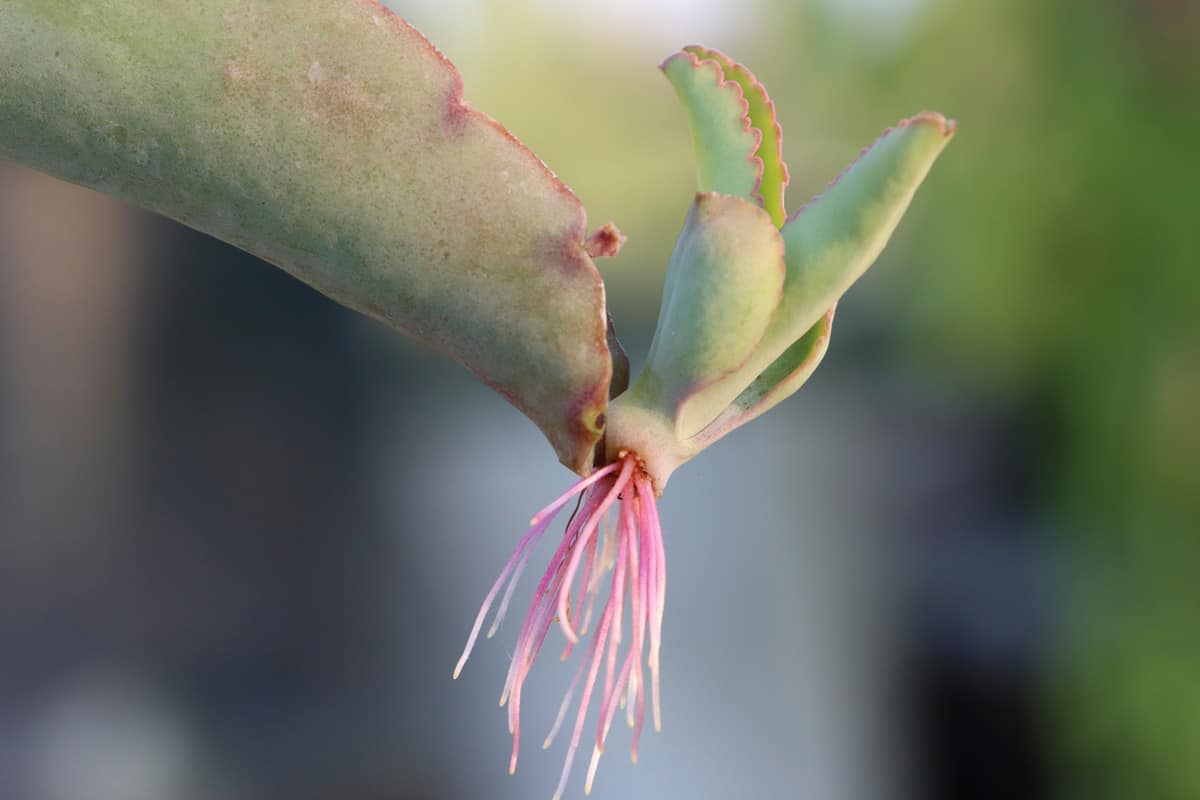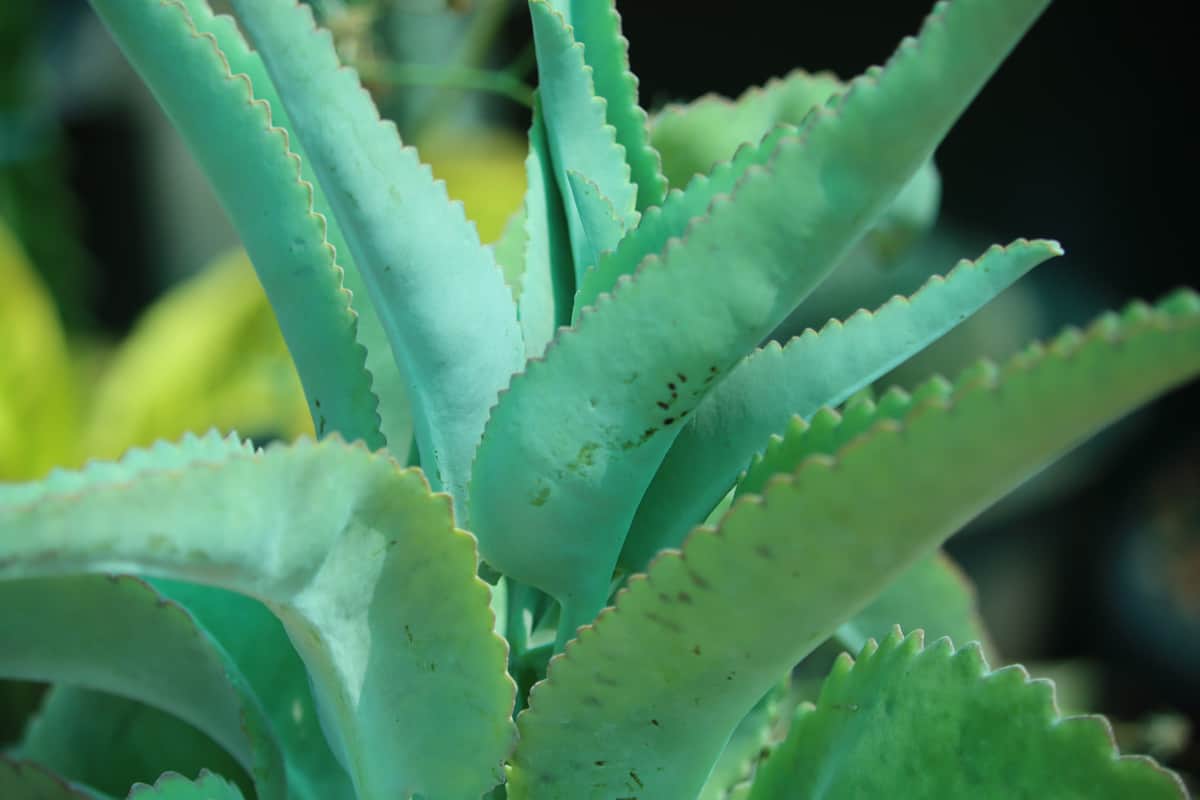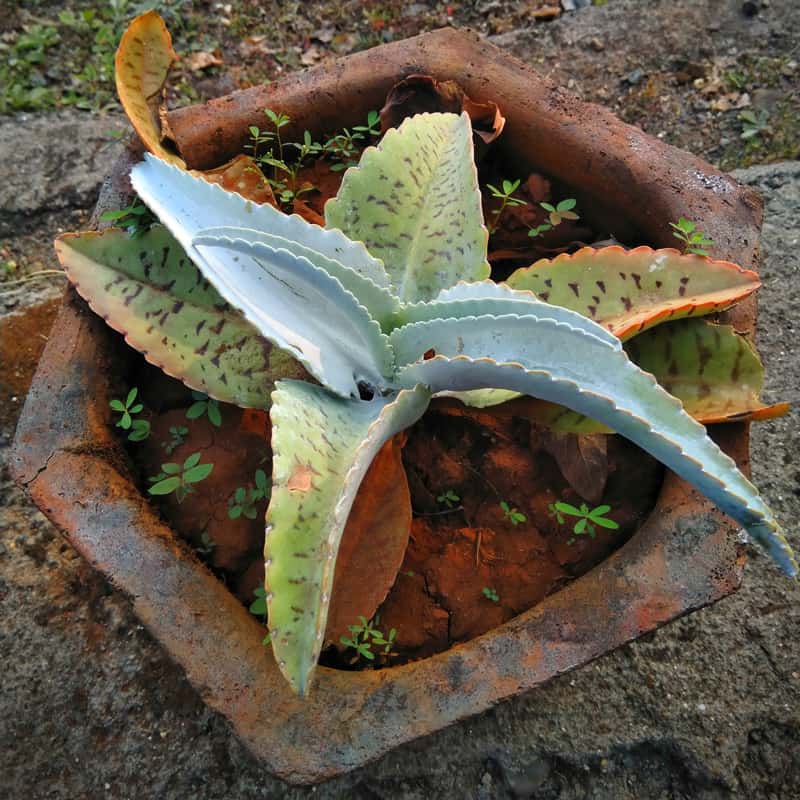Donkey ear plants love to grow in a location where they can receive or feel a Mediterranean, subtropical, or desert-like environment. So, if you can provide this plant with such climates, you can grow them healthy. Good thing we have researched the internet about the steps on how to propagate donkey ear plants correctly.
To propagate the donkey ear plant, the method to use is cutting. This technique is straightforward to do. You can do it as easy as:
- Getting a clean knife
- Preparing a well-drained and moist soil
- Cutting a mature leaf on your donkey ear plant
- Planting it in the container
- Watering it adequately
- Placing it in the correct location
If you surely want to propagate this plant, it would be best to learn how to properly take care of it, aside from just knowing how to perform the propagation process. Please keep reading to feed yourself with more information about donkey ear plants.
![Donkey Ear Succulent Plant with baby plant in her leaf, How To Propagate A Donkey Ear Plant [Step By Step Guide]](https://gardentabs.com/wp-content/uploads/2022/10/49.-How-To-Propagate-A-Donkey-Ear-Plant-Step-By-Step-Guide.jpg)
Propagating Donkey Ear Plants

You don't need to put so much effort when propagating this plant. If you can follow the steps correctly, you can finish it in only a few minutes. But, of course, that will depend on how many donkey ears you are propagating.
Before anything else, keep in mind that it would be best to propagate donkey ear plants in early spring. Plus, you should always ensure that before you start the process, the plant is healthy enough.
- Get a knife or pruning shears to take cuttings. But be sure that it is clean and sterile before using it. It is a must to prevent the plant from getting infections.
- Prepare fresh, well-drained, and moist soil in a pot or container.
- Choose a donkey ear leaf that is mature and contains no damage. Cut a piece of it.
- Plant it in the pot you have prepared.
- Spray water just enough to make the plant and soil adequately moist.
- Please place it where the temperature is at least 77 degrees Fahrenheit and gets bright scattered sunlight.
- Expect that new growth will appear after a week or two.
How To Properly Care For A Donkey Ear Plant

Almost every facet of a donkey ear plant's growth pattern is exceptional. From the formation of their new growth to the waxy epicuticular coating on their light-colored leaves. Not to mention its foliage that grows a unique shape, which resembles a donkey's ear.
Below are the tips you should follow to grow a healthy donkey ear plant.
Give Your Donkey Ear Plant Enough Water
Given moderate weather, the recommended watering frequency for this plant is once a week. But if it is autumn or winter season, it will need less watering. Since donkey ear plants are tolerable to drought, you should not overwater them.
And it is crucial to allow the soil to drain the water well before proceeding to the next watering. For that to happen, it would be best to use a pot or container that contains drainage holes and consistently inspect the soil's moisture level.
Furthermore, keep in mind that you should not leave your donkey ear plant in a pool of water. So, as much as possible, remove the drainage plate under its pot regularly.
Let Your Donkey Ears Get Adequate Sunlight
To grow healthy and appear very much alive, you should provide your donkey ear plant full sun or six hours of direct sunlight. Although full sunlight is suggested, you can still place it where it can receive partial shade.
In addition, it would be best not to let its sun exposure exceed six hours to prevent damaging the leaves of this succulent.
The ideal soil for this unique succulent is rich in humus, drains well, and is lightweight. You also need to ensure a 5.0 to 7.0 pH level.
However, you can utilize an all-purpose potting mix if you wish to. And you can also create an excellent soil mix. To do that, you can use the following:
- sand
- loam
- pumice
Click here to check out this soil moisture/pH tester on Amazon.
Protect Donkey Ear Plants From High Humidity
Donkey ear plants can survive humidity levels of 70 percent. However, it would be best to prevent them from growing in a location with high humidity levels. If you let this plant sit in such a humid area, expect some fungal diseases to infect them.
It is highly advisable to keep the humidity in the area where you have placed them consistently low.
Observe The Temperature
You can plant donkey ear plants in USDA hardiness zones 10 to 12, and it is because they are not that selective when it comes to temperatures. However, it would be best to observe and let it thrive in a location with a temperature of at least 59 degrees Fahrenheit.
In addition, if the temperature exceeds 91 degrees Fahrenheit, expect the donkey ear plant to enter dormancy.
Feed Them With Fertilizer As Needed
Donkey ear plants don't need much fertilizer to grow healthy. Indeed, fertilizer can help them boost their growth but feeding with it is not mandatory.
Click here to check out this succulent fertilizer on Amazon.
What Are The Other Names For Donkey Ear Plants

The donkey ear name is popular because of the shape of this plant. However, you must know that there are several names that gardeners and homeowners call it, and they are:
- Life Plant
- Tree of Life
- Sprouting leaf
- Palm Beachbells
- Leaf of Life
- Good Luck Leaf
- Miracle Leaf
- Giant Kalanchoe
- Life Plant
Potting Donkey Ear Plants

Follow the tips below on how to pot your donkey ear plants properly.
What Pot To Use For Donkey Ear Plants?
The ideal pot for donkey ear plants is a hanging basket or clay pot. As mentioned, allowing the water to drain well would be best. So, as much as possible, use pots that contain numerous holes.
Click here to check out this clay post on Amazon.
When To Re-pot Donkey Ear Plants?
The advisable frequency to re-pot your donkey ear plants is every two years. Remember that you don't need to use a bigger pot every time you re-pot. It is because the only primary purpose of changing the pot is to refresh the soil of your donkey ear plants.
How To Properly Handle Donkey Ear Plants When Re-potting
When you are re-potting your plant, it would be best to handle it with gentleness and do the process as carefully as possible, especially since the foliage of donkey ear plants is delicate.
Furthermore, the appealing donkey ear plant is typically mass-planted with other identical types to boost the area.
Lastly, if you want to have a cut flower, you can go for the donkey ear plant flowering variety.
It's A Wrap!

Now that you know how to propagate donkey ear plants properly, it's time to multiply them and enjoy the extra attractiveness they can offer. Additionally, it would be best to follow the basic and essential approach to care for them to achieve their beautiful growth.
We hope you find this post enjoyable to read and helpful in answering your concerns about donkey ear plants. If you wish to continue reading, you can check these posts out!
How To Level Yard After Tilling (Inc. By Hand, Lawn Roller, And Best Tools To Smooth The Ground)?
How To Set Toro Sprinkler Timer [Inc. ECX, Greenkeeper, Lawn Master II, And TMC-212]?





